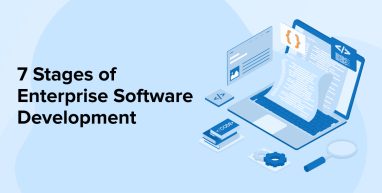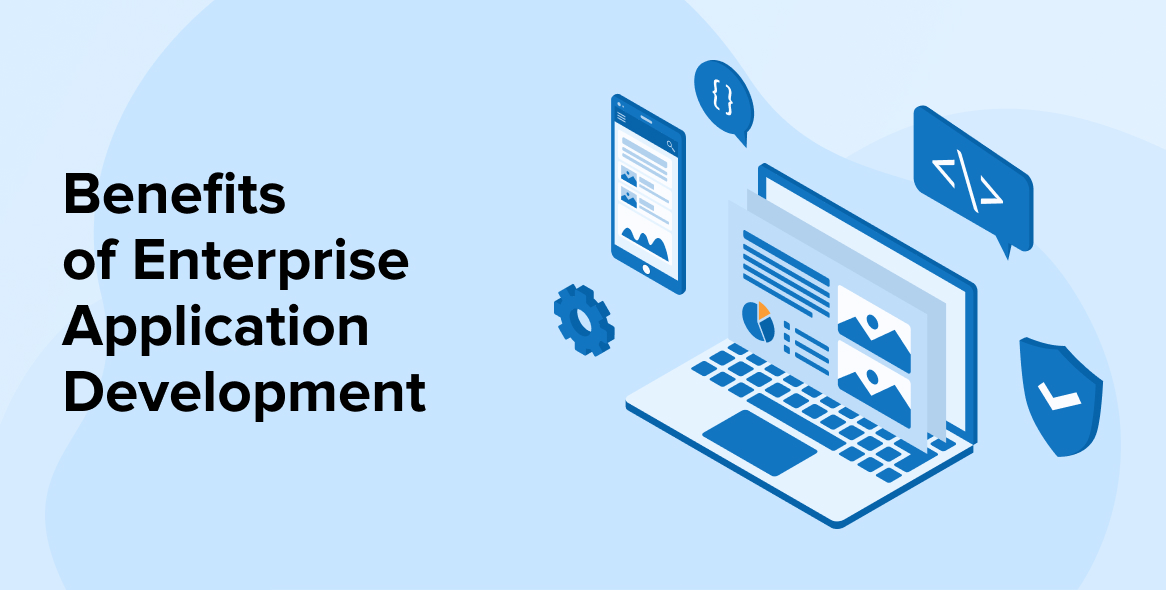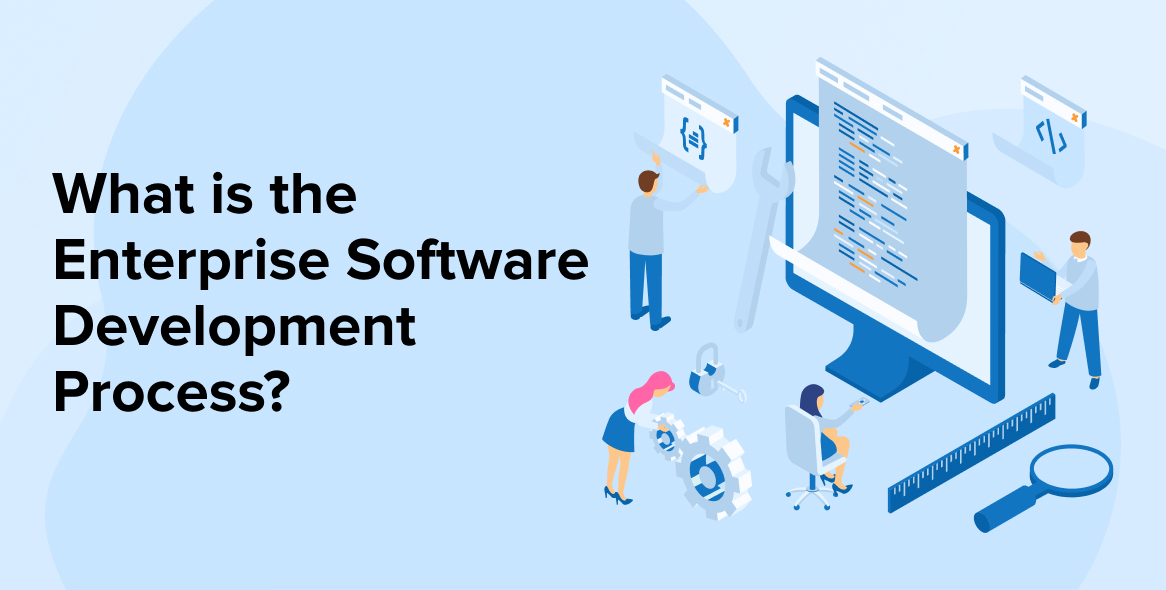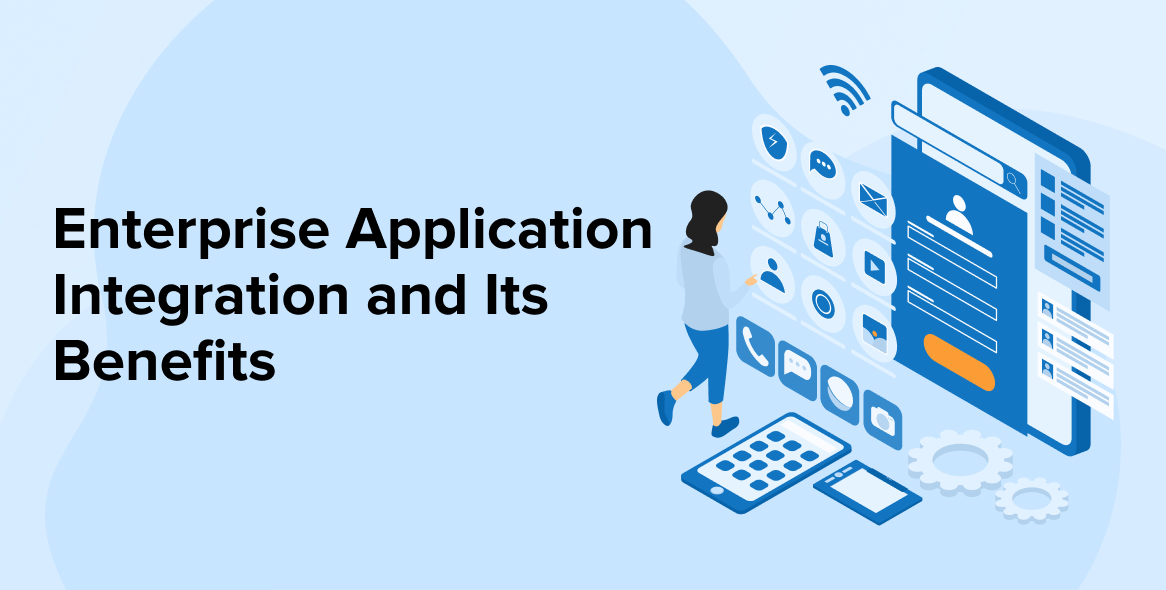
The emergence of software technology has impacted the foundations of many businesses. Nowadays, every enterprise is increasingly dependent on technology to improve and speed up their processes. For that, the business may need to develop software that addresses their individual business needs. But is it feasible to build multiple apps for each business need? The answer is No, there comes enterprise software development in the picture. The enterprise software development process is not a fixed method, it keeps varying as per the technological needs. Your development process can change the face of the developing application.
If you think that there is a fixed methodology that will boost your development process and upscale your app’s performance, you are mistaken. Many businesses are trapped in the belief that following other’s steps will help them achieve desired results. However, there is a systematic approach to boost software app performance and enhance the workflows. Software development Lifecycle has a predefined methodology that can be perfectly fitted to any business size.
Software development Lifecycle aka SDLC enables developers to address product development in a structured manner while simultaneously ensuring that projects are delivered on schedule and within budget. SDLC for enterprise applications is a development monitoring system that is divided into seven stages that must be completed in a specific order. It makes it easy for planners to schedule the software project and have near-accurate time and expense estimates by following it. With the leading enterprise software development company, this process becomes easier to execute.
All businesses have now defined a specific process for enterprise application development methodology. This incremental step-by-step approach helps companies easily develop software apps and accurately predict project completion times. This blog is nothing from the usual, but this can be an eye-opener for many businesses seeking visibility and transparency in their business process.
Let us start with the 7 vital stages of enterprise software development.
1. Defining the Scope of Enterprise Software Development Process
Before the development phase for a software application development, there are three major processes. Similarly, we have three phases involved in the post-development process of any software. In the initial pre-phases, the first one is defining the project. This stage can also be renamed by other names like planning, plotting, blueprint, or requirement gathering stage in enterprise software development.
Ultimately, in the stage of software development, the first step is to define the scope of the project. Along with scope, we devise a plan, involve all the stakeholders, discuss the plan, and wait for the approval from all team members before moving forward. This process is crucial as it involves all the operations and functions that need to be integrated with the software.
Now based on other considerations and specifications set out in this phase, the schedule and the budget have been decided. The decision regarding the necessary resources is also made whether to purchase technology or tools. Additionally, the talent required for this software project is also finalizes among other things.
By the end of this stage, there will be no concealed information in this process, allowing businesses to reduce the risk associated with their software growth. After this, we will proceed with analyzing the requirements.
2. Analysis Requirements in Enterprise Applications
Following the requirement-gathering phase, we will analyze the requirements to identify any loopholes in the enterprise software development process. If we find any issues in this process, we will be resolved during this phase itself. Hence, it will not interrupt the process of development or any subsequent stages.
In the second stage of enterprise software development, the deliverable from the previous stage is considered. A Software requirement specification (SRS) document is prepared, serving as a guide for what should be done and how to address all the minor details specifically of enterprise software. This stage checks on the feasibility of the application and accordingly, the plan progresses ahead. The SRS document manages all the information and, after validation, it is transferred to the development phase.
With this document, there will be no barriers to the development process. Everything is clearly defined and every detail is focused on and addressed. The software tools, technologies, and programming languages needed will be clearly outlined in this phase.
After the feasibility of understanding and integrating the requirements of custom enterprise software, the next stage is to implement the plans into designs.
3. Designing Phase of Enterprise Software Development
This phase of enterprise software development focuses on addressing all prerequisites. From the smallest modules to the overall architecture of the program, all the required details of a project are described and designed. The SRS document created in the previous process, is now being used as the foundation to develop the app. Different components are created and registered, while the project’s scope and services guide software management.
The framework and program architecture are prepared in this process based on the requirements identified earlier. The design of the system aids in determining overall system architecture as well as identifying hardware and function specifications. The device architecture requirements are used as guidance for the model’s next step. The data generated in this step will be carried forward to the next stage.
4. Development Phase of Enterprise Application Development
Now that the design is ready, we have arrived at the most anticipated stage of software development, where the actual implementation takes place. This is the most time-consuming and challenging process of the project. Coding is the process in which developers use the deliverables from the previous step to build and code using the programming language chosen in the first step. There are many challenges that we come across when projects are developed by in-house employees.
There are sprints established in the planning phase that need to be adhered to in this development phase. We need to abide by the schedule and deliver the planned deliveries. The company monitors upcoming trends in enterprise application development. There is a set of developers assigned to handle the delivery tasks while a project manager oversees the enterprise application development phase.
Once all modules are designed, they are assembled. If everything goes according to plan and there are no dependency failures or conflicts, we will have a completely functional program ready for the next phase of custom software development.
5. Testing Phase of Enterprise Application Development
Another set of important stages came into the picture just after completing the enterprise app development process. These enhancement stages include examining, testing, and then product deployment.
There are various types of testing processes that can be performed to conduct tests of the applications. Software development testing includes the following testing methods.
- Unit Testing: It involves testing individual modules of a program one at a time to ensure that each unit functions properly.
- QA Testing: Checking for quality assurance reduces the number of failures and accidents. As a result, you’ll have a clean code that’s easy to modify as required.
- Integration Testing: This form of testing is used to detect any defects in the communication between merged units. To ensure a smooth result, all the individual units are put through their paces.
- UI Testing: This evaluates the user interface of the developed app, which includes how it looks and feels. This refers to how the program will appear to consumers and how they will communicate with it.
- Performance Testing: This test aims to find and eliminate performance bottlenecks in custom applications. Developers measure various factors including speed, reaction time, reliability, resource utilization, and scalability using the expected workload.
6. Deployment Phase of Enterprise Software
Ideally, the last stage of enterprise application development is the Deployment Phase. For an organization, enterprise application software are game-changer. They develop custom applications for native as well as modern applications. Utilizing modern technology, these enterprise applications have cloud-enabled services and storage to enhance mobility and eliminate accessibility challenges. The deployment stage takes care of all the data, web, and mobile apps of the company.
Finally, the enterprise application platform is ready for launch. The first step in the implementation process is obtaining all the necessary permissions to install the device. In this deployment process, all the software apps are tested thoroughly and after validating the software, it will be prepared for release.
The management of the deployment can be made automated by using Application Release Automation (ARA), a technique that many businesses use to install applications. Employees must need training on how to use the app until the custom enterprise software becomes available. This training ensures seamless release of your company’s software.
7. Maintenance and Upgrading Custom Software Product Development
Once the software application is deployed, it’s time to keep it running and update it to meet the business goals of the clients or stakeholders. This includes new program features, UI changes, and everything else that happens during the release phase.
To maintain processes and protect the device from external attacks, it is required to update software applications regularly for storage or cloud enhancements, as well as for web and data management.
8. Is Your Business Ready to Develop Enterprise Apps?
The blog emphasizes that there is no one-size-fits-all approach for developing custom enterprise applications. Employees are working efficiently on custom software applications. Here, we have seen the step-by-step process of software app development in any enterprise. However, there are challenges throughout the process if the organization chooses to do it on its own. Thus, it is advisable for every company and their employees to follow these steps when developing apps for their enterprises.
Although we now know that there is no set method for developing enterprise applications, different developers may take different methods. The steps mentioned above will appear in most of these processes in some way or another, so it’s important to be familiar with them. The Software Development life cycle has a comprehensive strategy for developing apps that forces you to log your plan in minute detail and efficiently plan to build, code, and test enterprise applications.






Thanks for the informative article. All the reasons explained here seem to be quite precise. Keep sharing such articles.
Most ideal choice depends upon our requirements, but making the wrong selection can be both costly and time consuming.When making the selection, Our prime concern should be the efficiency with which software serves our company and other partners in the best possible way.Custom software offers some advantages which can be beneficial for longer terms. Custom software can serve startups better than shelf software.